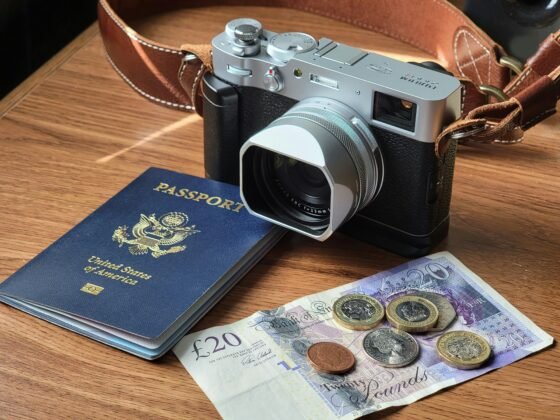You have an upcoming trip planned that you’re very excited about. Your bags are packed, the itinerary is set, and you can’t wait for a little rest and relaxation. But, there’s one problem: you’re not sure what to do with your cat.
You’d prefer to take your cat with you instead of hiring a sitter, but you’re not really sure if it’s feasible.
Well, we’ve got some good news- traveling with a cat is totally feasible, you just need to make sure you plan appropriately.
Check out this guide to learn the top tips for traveling with a cat.
1. Make the Carrier a “Happy Place” for Your Cat
At some point during your trip, you’re going to need to place your cat in a carrier. When this moment comes, make sure that carrier is as comfortable and luxurious as possible.
First and foremost, make sure you choose a carrier that’s large enough for your cat. Cats don’t like being confined, so it’s best to err on the side of too big rather than too small.
Also, make sure the carrier has enough space to hold food and water for your cat.
And, make sure the cat sees the carrier as a positive thing and doesn’t associate it with punishment. Before embarking on your trip, place the carrier in the cat’s favorite part of the home for a few weeks and occasionally leave a few treats inside of it.
2. Talk to Your Vet
Before you plan to take your cat on any sort of long-distance journey, you should talk to your vet.
Your vet will be able to determine if your cat is healthy enough to travel, and they’ll be able to give you advice on what to do in the event that your cat gets sick.
Your vet may also be able to provide you with information about cat safety depending on the specific country you’re traveling to.
Also, keep in mind that some airlines even require a pet health certificate for your pet to be able to board, so seeing the vet is a good idea either way.
3. Tips for Traveling by Plane
There are different things you need to keep in mind when traveling with your cat by plane and when traveling with your cat by car.
Let’s start with the top tips to follow for plane travel:
Know That Air Travel Can Be Risky
First things first, it’s very important to keep in mind that air travel can be risky for cats. This is especially the case if your cat has a “pushed in” face. This is because cats with pushed-in faces have shorter nasal passages that make them more vulnerable to heatstroke and oxygen deprivation.
Therefore, you should really only travel with your cat by plane if it’s unavoidable. Otherwise, they’ll be much happier if you leave them at home with a trusted sitter.
Study the Pet Policy
Every airline has their own unique pet policy. Before you book your flight, make sure you study up on the pet policy so there are no surprises.
Practice the Airport Screening Procedure
When going through security, you’ll be required to pull your cat out of its carrier and hold it in your arms as you walk through the metal detectors.
You should practice this process at home by leashing your cat, placing them in the cat carrier, walking them around the house while holding the carrier, and then pulling them out of the carrier and holding the cat in your arms.
During each practice session, praise your cat and give it treats so it has positive associations with this activity.
Don’t Expect Your Cat to Behave Like a Dog
As you probably already know, cats and dogs behave very differently. While cats are generally much more docile than dogs, they don’t respond to commands in the same way dogs do.
In other words, if your cat gets loose at the airport, they’re not going to sit or stay on cue. Therefore, to make sure your cat stays safe in the event of an escape, you make sure they wear a collar that has your contact information.
Pack Feline Essentials
Whether you’re traveling by plane, train, bus or car, you need to remember to pack some feline essentials.
Things you should pack include a leash, small treats, an extra collar with contact info, wet naps, a collapsible water bowl, and a mini litter box.
If you’re worried about your cat getting anxious during your trip, you may also want to consider packing catnip or CBD oil for cats.
Know Your Onboard Limits
It’s important to keep in mind that a cat carrier counts as a carry on luggage. In addition to the cat crate, you’re usually allowed to bring one other item that will fit below the seat or in the overhead compartment.
All other luggage will need to be checked.
Again, check with the airline to learn about their specific bag policies.
Pad in Extra Time
Lastly, you should pad in some extra time when traveling with your cat by plane. This is in case the paperwork takes a while or there’s a delay at security with your cat.
Respect Other Passengers
Just because you love your cat, doesn’t mean that everyone else will. As tempting as it may be, avoid opening the cat carrier during your flight and placing your cat on your lap. People in your row may have cat allergies or may even be afraid of cats.
And, if you take the cat out of its carrier once, they may be motivated later on to start meowing and hissing to get out.
Choose the Cabin When Possible
If leaving your cat at home isn’t an option, then choose the cabin whenever possible. While most airlines allow you to travel with your cat in a small carrier for a small additional fee, you should still call ahead of time to check on their policy.
Also, keep in mind that airlines have limits for the number of pets you can take with you in the cabin. So, if you’re planning to travel with more than just your cat, it’s very important that you check with the airline first.
Research Your Destination Country
If you’re traveling internationally with your cat, then it’s very important that you research the destination country ahead of time. Some countries, such as Australia, Hong Kong, Iceland, and Japan may even require that your pet be quarantined.
Other places may not even allow your pet to enter the country.
Also, when traveling to another country, it’s best to bring extra cat food and supplies, as there’s a good chance that the country you’re traveling to won’t sell the same brands.
4. Traveling With Your Cat by Car
Now that you know how to travel with your cat by plane, let’s take a look at what to keep in mind when traveling with your cat by car:
Practice
If it’s been a while since your cat has ridden with you in the car, you should practice driving with them in it.
Start with very short distances so they can slowly acclimate, and then make the distances increasingly longer until they’re ready for the full road trip.
Keep the Windows Up
While an animal poking its head out of the car window may look cute, it’s actually extremely dangerous.
This is especially so for cats, who can easily squeeze their bodies through a small crack and jump out the window into oncoming traffic.
So, if you want to roll down your windows, make sure your cat is securely inside their carrier.
Plan Pit Stops
If it’s a long road trip, you’re going to want to plan pit stops every 2-3 hours. This will give you time to feed and water your cat, and it will give them the opportunity to stretch out their legs and use their litter box.
If you take the pit stop outside, make sure to keep your cat on a leash.
Never Leave Your Cat in the Car
Leaving your cat in the car, even for just a short time, can be very dangerous.
Even if it’s a nice 72 degrees outside, the temperature in your car can easily heat up to 110+ degrees in a matter of minutes. So, if you need to pop inside a convenience store that doesn’t allow pets, place your cat in their carrier and roll the windows down.
Bring a Buddy
If possible, bring a buddy on your road trip with you. Having a buddy with you will mean you’ll have someone to watch after your cat when you need to run to the restroom or grab a bit to eat.
Leave the Front Seat for Humans
You should always keep your cat in the backseat of the car. In the event that your airbag deploys, your cat could be totally crushed under the airbag.
Tips for Traveling With a Cat: Are You Ready to Hit the Road With Your Feline Friend?
By keeping these tips for traveling with a cat in mind, your trip should go off without a hitch.
If you liked this blog post, be sure to check back in with our blog for more pet-related tips and tricks.












